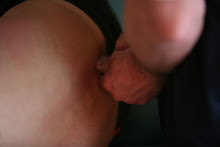
So.... We have had some snow in Flag. We put old Babs to the test. The snow plow moved this bank up onto the side walk, I cleared the whole thing, then had my Dad stand here for a photo opportunity. He made it out alive!! The lifting and twisting motion of removing this snow fall from our driveways and sidewalks brought many people in with acute back pain.
He moved a lot of snow. Before that he raised three kids, worked in the produce industry, beef industry, and back to produce. Dad is 64 years of age. He retired 2 years ago from a major grocery store in the mid-west, with no back pain!
When we go to the grocery store we pick up items in the produce department. I want you to think about this:
Stacks of potatoes- 10 lbs a bag.
Celery- boxes weigh around 40 lbs.
Carrots- boxes weigh around 40 lbs.
Apples- boxes weigh around 40 lbs. And are stacked high and long. 8-10 varieties.
Banana- boxes weigh around 60 lbs. Organic and non-organic.
Lettuce- boxes weigh around 40 lbs. Washed in freezing water. 4 varieties.
Oranges- boxes weigh around 40 lbs. And are stacked high and long.
Peanuts, Chard, Endive, Green Beans, Pineapple, Tomatoes, Onions, Garlic, Grapefruit, Avocado, Peppers of all variety, Asparagus, Watermelon, Squash.....and on and on and on......
No back pain. That's quite a work out everyday. Go back up and look at this guy's posture. No Hunch, strong core, strong back, all as a result of many years of similar work to the snow lifting.
From Dalton's Blog.......
Much controversy exists in the biomedical and rehabilitation community as to the preferred strategy for lifting. This may actually come as some surprise to many of you who believe that lifting with a flat or arched back (lordotic posture) is unequivocally the safer and more efficient way to lift objects from the ground.
Serge is a proponent of what is called the rounded back (kyphotic posture) lifting theory. At a Rolf Institute annual meeting presentation in the early 80’s, Serge argued that the back muscles are not strong enough to properly support the spine and that when lifting naturally (without being coached how to lift) people will round their backs relying on the posterior ligaments and lateral thoracolumbar fascia to support their spines. He insists that lifting with an arched back is dangerous, since contraction of the erector spinae muscles increases the compressive load on the spine.
In fact, a fundamental problem in spinal biomechanics is explaining why vertebrae and discs are not crushed during the lifting of even relatively small loads. This problem has been wrestled with by spinal experts for years.
Gracovetsky attempts to solve the problem by proposing a model of the spine where lifting occurs without great involvement of the back muscles. They argue that lifting with a rounded back (kyphotic lifting posture) is safer since this results in less contraction of the erector spinae (lower back) muscles.
He believes that to lift properly, we must rely on passive bracing of the posterior ligamentous system and the thoracolumbar fascia of the spine for support. They claim that this lifting posture/strategy is to be preferred, since it results in less spinal compression and less tendency for shear forces in the spine.
Gracovetsky argues that the lower back muscles are not located posterior enough to the spine to be able to exert very much extensor torque and that since the erectors are located very close and lateral to the spine, they were never intended to generate much power.
While I may not agree one hundred percent with this model, many people do seem to lift this way, and many never have acute low back pain......Hope it helps........and I hope we receive more snow!!


No comments:
Post a Comment